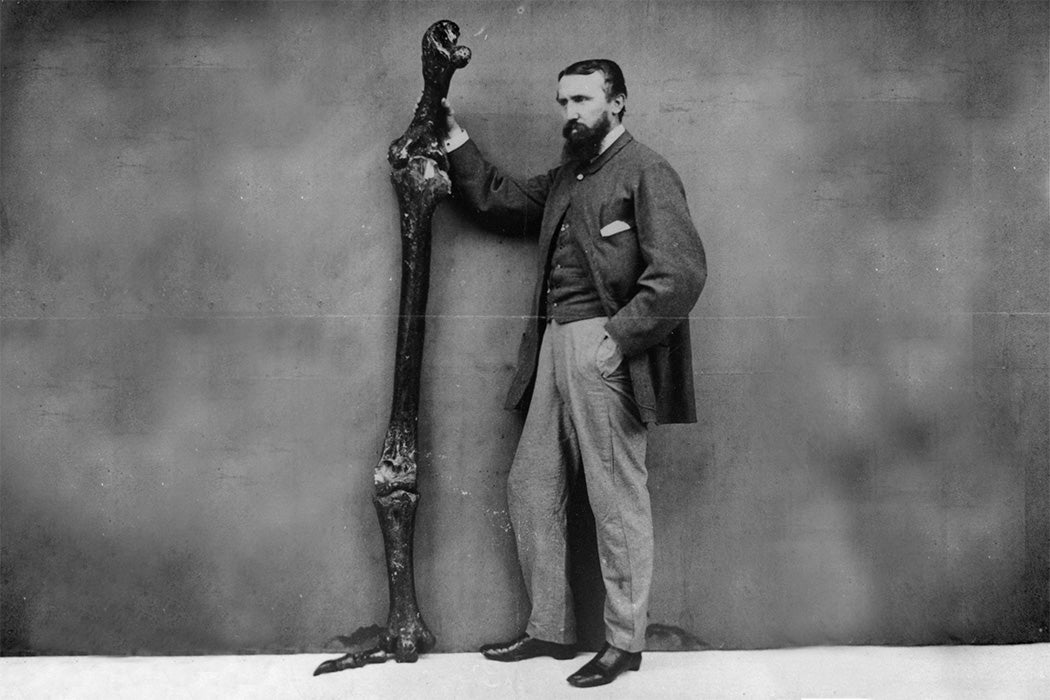How much is that dinosaur in the window? It’s a vexing question, particularly for paleontologists. Science and commerce are not necessarily compatible, and the dinosaur fossil market abounds with bootlegged imports and fakes. In the U.S., it’s finders-keepers if your dino discovery is on private land. “Sue,” the T. rex, sold for $8.3 million in 1997.
Here’s where the historian Lukas Rieppel comes in. He’s been writing about the first Gilded Age of the late nineteenth century, when rare dinosaur bones were valued the same way as other scarce resources, like gold, silver, and coal.
Rieppel explores the sale of a mother lode of dinosaur bones discovered at Como Bluff in Wyoming, in 1877. That was a miracle year for American dinosaurs: three major finds in the West turned the region into a “paleontologist’s El Dorado, making the United States the international center of dinosaur research, publication, and display.”
It also fueled “bone wars” between the country’s most famous paleontologists. The personalities of Othniel Charles Marsh, of the Peabody Museum at Yale, and Edward Drinker Cope, of the Philadelphia Academy of Natural Sciences, have obscured the “transactional relationships that dominated 19th-century natural history.” Marsh and Cope were independently wealthy and spent fortunes buying dinosaurs.
“The market for fossils was notoriously prone to deception and outright fraud,” writes Rieppel. Out in the “Wild West,” there was no “established legal or regulatory framework, contracts were generally hard to enforce and disputes often had to be settled through informal arbitration procedures.” The traditional face-to-face deal was often out of the question, and “trust did not scale up nearly as well,” even though railroad and telegraph lines bridged great distances. Rieppel writes:
[h]aggling over dinosaurs relied on a a set of transactional practices established in America’s bourgeoning mineral industry for clues on how to behave. Notably, these included a set of negotiation tactics designed to exploit rather than overcome the deficit of trust…
The first dinosaur fossils discovered in the U.S. were on the East Coast. These were donated to scientific institutions by their discoverers. But the three western bone quarries discovered in 1877 were offered for sale. This was a “deep shift in the economic status of American dinosaurs, marking their transition from a gift into an object of economic exchange.”
White settlers on the frontier were already familiar with a booming (and busting) extractive economy. Fossil hunting and mining became intimately linked. The mineral industry, however, “was a notoriously speculative bubble full of prospectors lured by the promise of striking it rich.” Few did. But there were always suckers to gull into the promise of a deep mine… of perhaps nothing at all.
Weekly Newsletter
In the case of Como Bluffs, there definitely was something. A lot of something. But the discoverers weren’t sure what dinosaur the “stone bones” had come from. The prospective buyer, O.C. Marsh, was in far off New Haven, so he couldn’t know either. Negotiations dragged out for a year, with the somewhat naïve sellers revealing their hand too soon by sending Marsh prime samples. They felt Marsh got the better of them. He ultimately became their employer.
Barnum Brown, who worked for the American Museum of Natural History (and yes, that was his name), made the fossil-bones-as-commodity analogy plain when he reported from the “treasure dirt” of a dinosaur quarry: it was “a veritable gold mine and I have been in bones up to my eyes.” At Como Bluff, there were so many fossilized bones to be had that a cabin was built out of them. So how much is a dinosaur worth really? It depends who’s buying.







